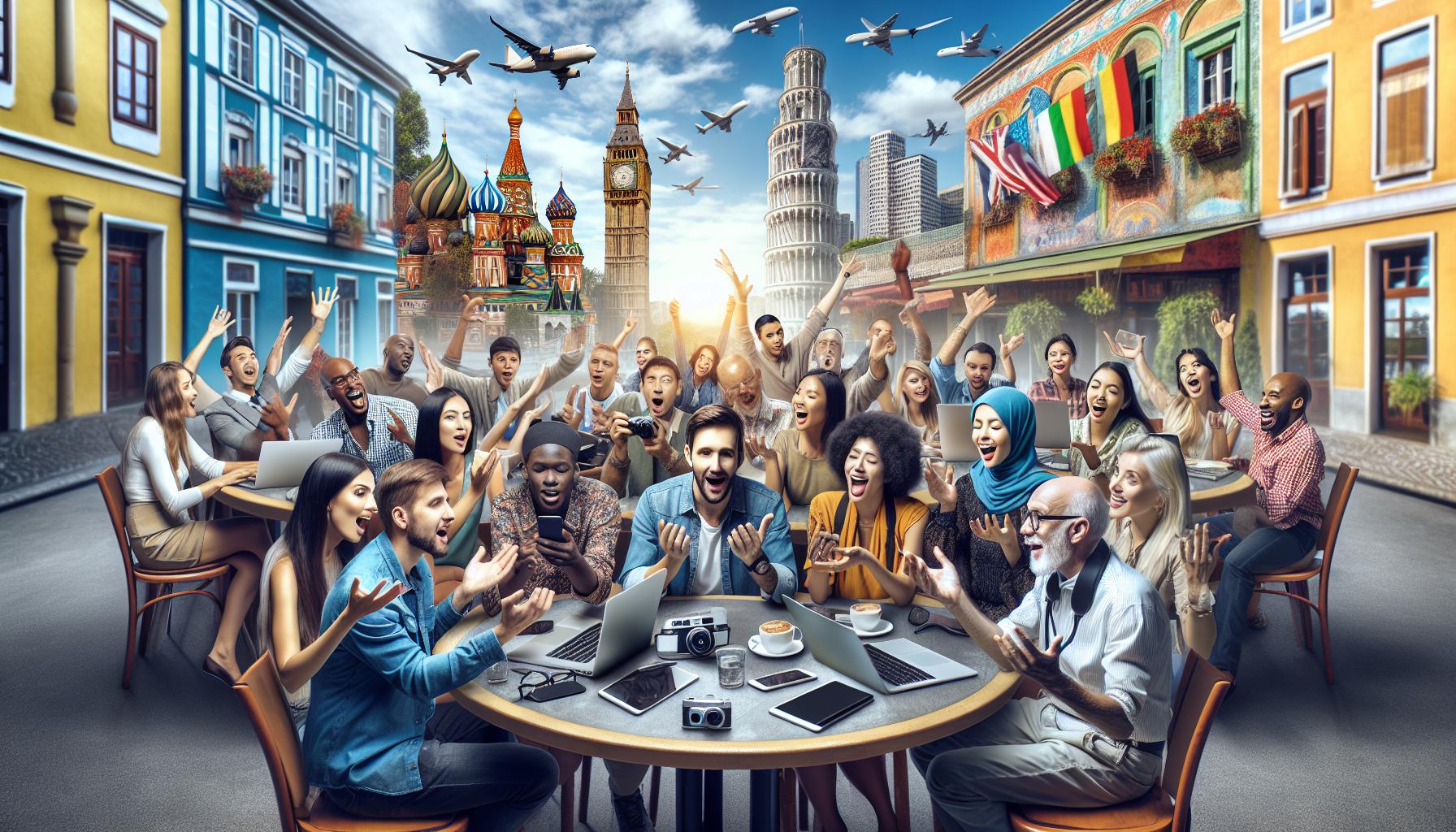Travel blogging has transformed over the years, evolving from a niche hobby to a booming industry. With the rise of social media and platforms like Instagram and TikTok, many people wonder if traditional travel blogs still hold their ground. Are they a thing of the past, or do they still have a place in the digital landscape?
I’ve seen firsthand how the travel blogging scene has changed, and it’s hard not to ask: is travel blogging dead? As I explore this question, I’ll dive into the current trends, the challenges bloggers face, and what the future might hold for those passionate about sharing their adventures. Whether you’re a seasoned traveler or just curious about the blogging world, there’s much to uncover.
Key Takeaways
- Travel Blogging Evolution: Travel blogging has transitioned from personal journals to a professional industry, heavily influenced by social media and visual platforms.
- Influencers and Visual Content: The rise of influencers on platforms like Instagram and TikTok has shifted focus towards engaging visual storytelling, often monetized through brand collaborations.
- Challenges of Market Saturation: With over 600 million blogs online, new travel bloggers face fierce competition, requiring unique content and niches to stand out.
- Audience Engagement Decline: Audience interaction on blogs has decreased, urging bloggers to adapt by creating interactive and multimedia-rich content to foster community involvement.
- Future Trends in Travel Blogging: Innovative content strategies, including video integration and niche specialization, are essential for success in the evolving travel blogging landscape.
Is Travel Blogging Dead
Travel blogging evolved from a niche hobby into a thriving industry. This shift largely stems from the rise of social media platforms that changed how content creators share their experiences.
Early Days of Travel Blogging
Early travel blogs emerged in the late 1990s and early 2000s. Blogs served as personal journals, allowing travelers to document their experiences in real-time. My early blog posts included detailed accounts of locations, tips for budget travel, and personal reflections. Travel blogging was smaller and more intimate, with a tight-knit community connecting through comments and links.
Changes Over the Years
Changes in technology and social media reshaped travel blogging significantly. With the rise of Instagram, TikTok, and YouTube, visual content became paramount. Bloggers shifted focus from text-heavy posts to vibrant images and short videos. Today, influencers monetize their content through sponsored partnerships and endorsements, changing the business model of travel blogging. Additionally, SEO strategies have become crucial for visibility, emphasizing the importance of trend analysis and audience engagement.
Current Trends in Travel Blogging

Travel blogging continues to evolve, adapting to new technologies and audience preferences. Current trends highlight the growing influence of social media and video content.
Rise of Influencers and Social Media
Influencers dominate the travel blogging landscape, capitalizing on platforms like Instagram and TikTok. These platforms emphasize visual storytelling, attracting followers with stunning imagery and engaging captions. Influencers leverage their reach through brand collaborations and sponsored posts, creating a new revenue stream that traditional bloggers often find difficult to match. For example, many influencers earn substantial income by partnering with travel companies, hotels, and tourism boards, reshaping the advertising approach in the travel industry.
The Role of Video Content
Video content plays a crucial role in travel blogging today. Platforms such as YouTube and TikTok thrive on dynamic video experiences, offering travelers instant access to destination insights. Short-form videos capture attention quickly, making them ideal for showcasing breathtaking scenery, local cuisine, and immersive experiences. Many bloggers now prioritize video creation, integrating it into their travel narratives to enhance audience engagement. Statistics indicate that video content can drive up to 1200% more shares than text and image content combined, emphasizing its power in the current digital ecosystem.
Challenges Faced by Travel Bloggers

Travel bloggers encounter several significant challenges in today’s fast-paced digital environment. The competitive landscape requires adaptability and innovation.
Saturation of the Market
Saturation impacts visibility in the travel blogging niche. Countless blogs flood the internet, making it difficult for new voices to be heard. As of 2023, over 600 million blogs exist, and many focus on similar themes and destinations. Differentiating content becomes crucial. Travel bloggers must find unique angles or niche topics to stand out and attract readers. Offering specialized knowledge or personal stories can help overcome this saturation and resonate with targeted audiences.
Decreased Audience Engagement
Decreased audience engagement affects many travel bloggers. Social media algorithms prioritize visual content, often sidelining traditional blogs. For instance, audience interaction on blogs has dropped by an average of 30% since 2020, according to industry reports. Engaging readers requires strategic content that encourages comments and shares. Travel bloggers must create interactive elements, like polls or quizzes, to boost participation. Additionally, adapting to trends in video content can enhance connection with followers, fostering a more engaged community.
The Future of Travel Blogging

Travel blogging continues to evolve, adapting to advancements in technology and shifts in audience preferences. Innovative strategies and niche opportunities help maintain relevance within this competitive space.
Innovative Approaches to Content Creation
I find that incorporating multimedia elements is essential in today’s travel blogging landscape. Bloggers increasingly integrate video content, interactive maps, and immersive storytelling to forge deeper connections with audiences. Live streaming and virtual reality experiences enhance engagement, providing real-time insights into travel destinations. Additionally, user-generated content, such as guest posts or social media collaborations, enriches a blog’s overall narrative and broadens its appeal. Leveraging tools like Instagram Reels and TikTok allows bloggers to present quick, captivating snippets of their journeys, attracting viewers’ attention and driving traffic back to their websites.
Niche Blogging Opportunities
Identifying a specific niche creates pathways to succeed in travel blogging. Focused niches, such as eco-friendly travel, solo female travel, or culinary tourism, attract dedicated audiences looking for tailored content. I observe that bloggers who hone in on unique topics can establish authority and foster loyal followings. Furthermore, with the rising demand for sustainable travel experiences, bloggers addressing these concerns find ample opportunities for partnership with eco-conscious brands. Engaging in lesser-known travel themes, like cultural immersion or off-the-beaten-path adventures, also helps capture interest and differentiate from mainstream competitors. By positioning myself within a specific niche, I enhance my chances of thriving in the ever-changing landscape of travel blogging.
Travel blogging isn’t dead; it’s simply evolved. The landscape has shifted dramatically with the rise of social media and video content. While traditional blogs face challenges like saturation and decreased engagement, there’s still a place for those willing to adapt.
By embracing new formats and focusing on niche topics, bloggers can still carve out their space in this vibrant community. It’s all about creating engaging content that resonates with audiences. The future is bright for those ready to innovate and connect in meaningful ways.



